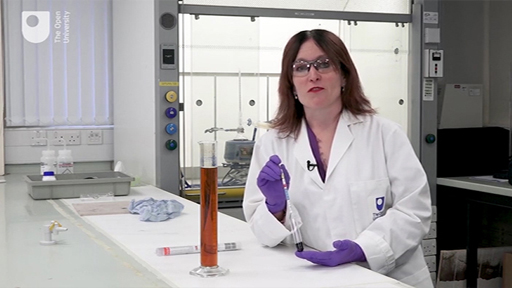1.3 Hydrometry and specific gravity
Just as the early tax collectors did, people still use hydrometers to measure alcohol content today. If you are taking part in the homebrew experiment, you probably used a hydrometer in Week 1. You may well have taken another specific gravity reading (the ratio of the density of the fermenting liquid to the density of water) in Week 4, half way through the brewing experiment.
You can now check if your homebrew is complete by taking a final specific gravity reading as illustrated by Louise MacBrayne in the following video.

Transcript
As you saw in Week 1, when the beer is undergoing fermentation the sugars in the liquid are converted by the yeast into alcohol and carbon dioxide. Alcohol in water is less dense than sugar in water and so this will result in a change in the specific gravity – the hydrometer will now sink in the liquid compared to the original gravity. It will now have a specific gravity closer to that of water.
The beer has finished fermentation when the hydrometer reading remains constant over a period of two days and does not decrease any further. This reading is called the ‘final gravity’ or ‘FG’ and is used, in conjunction with the original gravity, to work out the alcohol by volume content of the liquid. For beers the final gravity is around 1.015–1.005.
To convert the final gravity to ABV, a simple calculation is needed, as illustrated in Equation 1.
So, using the example from the video above:
Original gravity before fermentation = 1.04
Final gravity after fermentation = 1.015
Although this may seem a little on the low side, this is possible for a homebrew!
